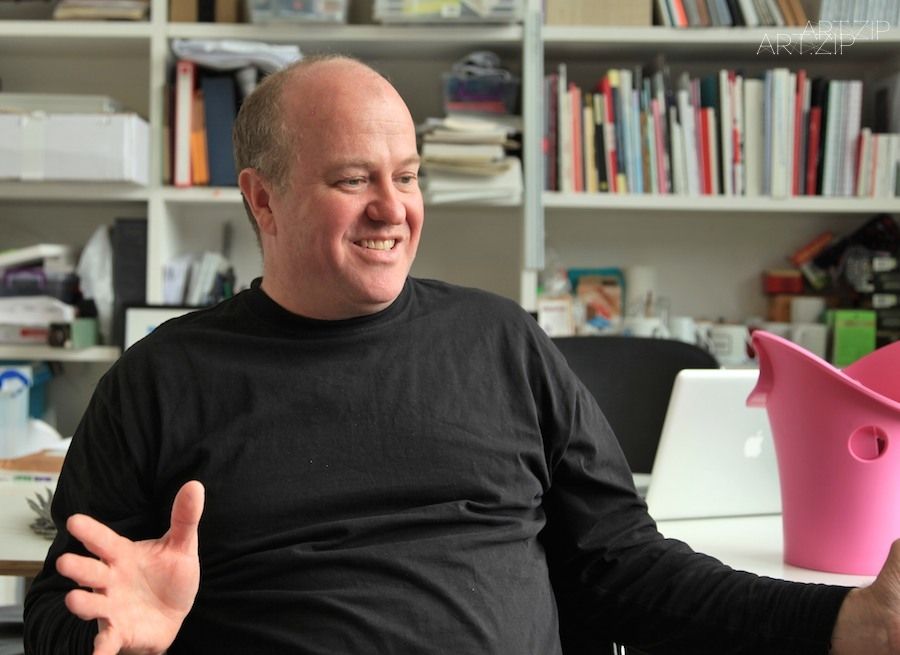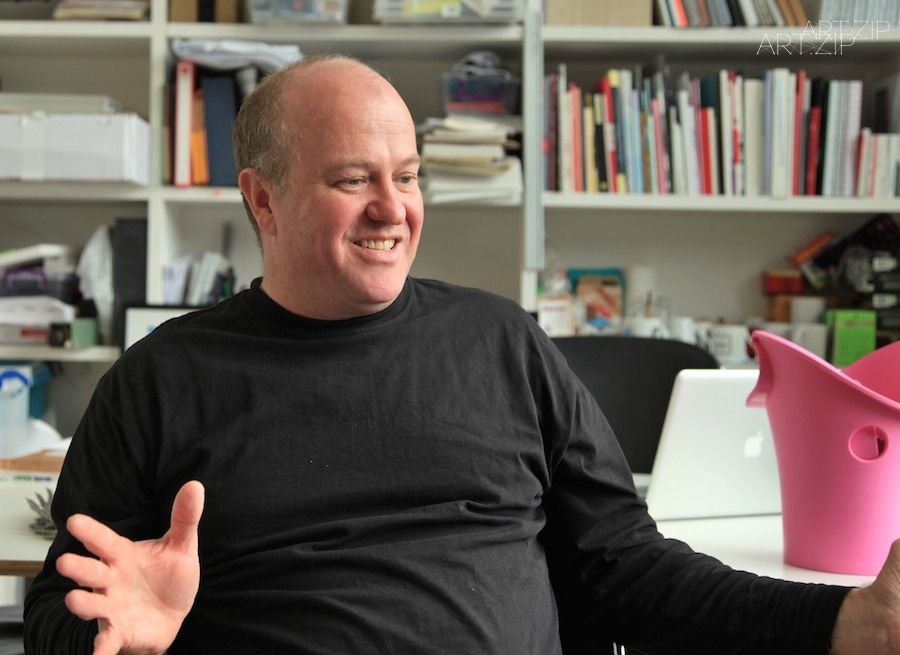
Interview with Professor Miles Pennington
Head of Innovation Design Engineering at the Royal College of Art
採訪邁爾斯·潘寧頓
皇家藝術學院創新設計工程課程主任
.
Professor Miles Pennington joined the Royal College of Art in 2002 as a visiting tutor and became senior tutor of Innovation Design Engineering in 2007. He was appointed Head of Department and Professor of Innovation Design Engineering in 2009 and is one of the co-founders of the Global Innovation Design programme.
邁爾斯·潘寧頓教授在2002年作為客座導師加入皇家藝術學院,2007年成為創新設計工程(Innovation Design Engineering)課程的資深導師,在2009年他成為了創新設計工程課程的教授和課程主任,也是全球創新設計(Global Innovation Design)課程的創始人之一。
.
ART.ZIP: Will you please give us a brief introduction to yourself and the programme?
MP: I’m the head of two programmes here, Innovation Design Engineering(IDE), which has been going for 35 years, and Global Innovation Design(GID), which is in its first year. It is a brand new programme. I actually studied IDE at the RCA, which is now called Innovation Design Engineering, though it used to be called Industrial Design Engineering. I studied in the early 1990s, and at that time, the programme was about bringing engineers into the world of design, and making them stronger industrial designers because they understood the function, aesthetics and usability of a designing object. In the last ten years that approach of accepting people from outside the discipline has blossomed. We now take people from engineering, from design, and from many different backgrounds. We have fine artists, journalists, bankers, business people, mechanical engineers, electrical engineers, product designers and graphic designers; we accept anybody who has passion and talent. I’m very jealous of the current students. I didn’t have an experience like that. Here they develop a global address book of friends, and they have the most amazing multidisciplinary, multicultural experience. For example, we have a Russian mechanical engineer sitting next to a South Korean industrial designer, sitting next to a British fine artist. It’s a wonderful network. A lot of what we do here is driven by the students. These are the key points of the RCA, the freedom to explore and the student-driven experience. Every year on the student’s feedback reports, students always state that they learn the most from their peers. This sounds strange, I realise, a diversion from the classic university model, in which the professor is meant to be the teacher, but we do our best to resist that model and the risk of just producing replicas of yourself. We understand that’s not the future. Our students are the future, and they are going to figure out their own way forward. They are like chicks learning to fly; while older birds might try to teach the chicks, it is ultimately the chicks that must learn to fly. We can’t hold their hands the whole way through. So the RCA Master’s experience is very much about initiative, led by individuals from the student body, which can sometimes make people feel a bit out of their depth: ‘I don’t know what to do, no one’s telling me what to do next.’ That’s the point. When they realise they are doing it on their own, they will become stronger, more independent, free-thinkers. One of the best quotes that I’ve ever heard about the RCA was from a Californian industrialist on why he loves the RCA design graduates. It’s because they thought 180 degrees differently from everyone else in the room. This isn’t because they’re a bunch of crazy people, they just have different opinions and are willing to express them.
ART.ZIP: 請您給我們介紹一下您的專業背景和您的課程的設置情況?
MP: 我主要負責這裡兩個課程的教學工作,一個是創新設計工程(IDE),這個課程已經開設35年了;另一個是全球創新設計(GID),這個課程很新,只辦了不到一年的時間。我年輕的時候在皇家藝術學院學習工業設計工程(Industrial Design Engineering),也就是現在的創新設計工程(IDE)。90年代初期我在這裡學習的時候,課程的方向是要把工程師帶到設計界,讓他們成為更強的工業設計師,因為通過這些設計課程,使他們更懂得如何讓產品既實用又美觀。過去十年裡,皇藝招收了很多設計專業以外的學生。我們現在有來自各個專業背景的學生──藝術家、媒體從業人員、銀行家、商務人士、機械工程師、電子工程師、產品設計師和平面設計師等等。我們歡迎任何有熱情有才華的學生。說實話,我真的十分羨慕現在的學生,在我求學的那個年代并沒有像現在這麼國際化的學習體驗。現在的學生可以和來自世界各地的同學一同學習,還能擁有很棒的跨學科、跨文化的體驗。譬如說,一個俄羅斯機械工程師旁邊坐著韓國工業設計師,而他旁邊坐著的是一位英國藝術家,這真是很美妙的人際網絡。我覺得皇藝很突出的一點是,這裡有很多學生自發的項目,學生擁有自由探索和自我啟發的體驗。每年都有很多學生表示他們從同學身上學到的東西比老師教的要多。這聽起來可能有點奇怪,從一個傳統的大學模式來說,老師肩負著教學的重要角色,但是我們盡力不去扮演那樣的角色,因為這樣很容易教出跟自己一樣的學生,我們不希望學生成為我們的複製品。我們深知那不是未來,我們的學生才是未來,他們需要找到一條通向未來自己的路。他們就像小鳥學飛一樣,年長的教年幼的學飛,最終飛起來還是得靠他們自己,我們不能一直牽著他們的手走。所以說皇藝的研究生課程有很大的自主性,由學生自己主導,有時候他們可能覺得這有點超越他們的能力範疇,他們或許會抱怨:‘我不知道做什麼,沒人告訴我下一步該怎麼做。’,但這就是重點所在。當他們意識到他們只能靠自己去做點什麼的時候,他們會變得更強大、更獨立,成為擁有自由思想的人。我聽過最好的評價是一位加州的實業家解釋他為甚麼喜歡皇藝的設計專業畢業生,因為教室裡坐著的每一個學生的想法都和別人想的不一樣,可以說是大相徑庭。這不是說坐著的都是一大幫瘋子,他們只是持不同意見并敢於表達的人。



